Featured Articles
The Truth About Transgenderism (Part 2)
Published
5 years agoon

By Lisa*
In the book When Harry Became Sally, Ryan Anderson explains that when researchers followed people who had sex reassignment surgery over 30 years in Sweden (a culture that is strongly supportive of transgendered people), they found that those who had had the surgery still struggled with severe mental unrest. The suicide rate of those who underwent surgery rose to 20 times that of their comparable peers. He concluded that transitioning to the opposite gender does not produce the happiness people seek. Perhaps this is because their problems go much deeper.
More than 100 follow-up studies of post-operative transsexuals were done by the University of Birmingham. It was concluded that none of those studies provided evidence that gender reassignment is beneficial. The Obama administration came to the same conclusion in 2016. An Obama Centers for Medicare and Medicaid study pointed out a 19 times greater likelihood of death by suicide in individuals who underwent sex reassignment surgery. The Centers for Medicare and Medicaid Services concluded that, based on a thorough review of clinical studies, there was not enough evidence to show that sex reassignment surgery benefitted its patients at all. This is why insurance hasn’t covered it . . . up until now.
Consequences of Sex Reassignments
Telling a gender-confused person they should transition is like telling a bulimic, “Yeah, I know you’re only 80 pounds and wasting away, but since you still think you’re fat, I guess letting you get gastric bypass surgery couldn’t hurt if it will help you feel more thin.”

Jamie Shupe, the first person to obtain a “non-binary” sex classification in America, has a lot to say about the evils of trans medicine. After participating in it for six years, he says it left him with an “eternally scarred psyche” and a host of health issues. Convinced he was a woman during a mental health crisis in 2013, Jamie’s therapist recommended he start on estrogen and testosterone blockers. Jamie says, “I believed that wearing a long wig, dresses, heels, and makeup would make me a woman. The best thing that could have happened would have been for someone to order intensive therapy that would have protected me from my inclination to cross-dress. Instead, quacks in the medical community said, ‘Your gender identity is female.’”
When Jamie began the process of transitioning, doctors and therapists told him he’d soon experience a positive boost in mental health. “It was just the opposite,” he says. “It destabilized my mental health because I was living in a false reality. I was fighting my body . . . . I perfectly understand why this kills people and why there’s such high suicide rate . . . . It’s the program itself that’s killing us.”
Jamie later de-transitioned and currently speaks out against trans medicine. He now admits, “All of my sexual confusion was in my head. I should have been treated. Instead, at every step, doctors, judges, and advocacy groups indulged my fiction . . . .”
When Jamie began the process of transitioning, doctors and therapists told him he’d soon experience a positive boost in mental health. “It was just the opposite,” he says. “It destabilized my mental health because I was living in a false reality. I was fighting my body . . . . I perfectly understand why this kills people and why there’s such high suicide rate . . . . It’s the program itself that’s killing us.”
Jamie Shupe
Much as so-called experts changed the language around addiction to absolve people of personal responsibility, the same is now being done in the trans arena. Just as it’s no longer politically correct to say a drug addict makes a choice by taking drugs (instead they have a disease), we can no longer call men who dress as women “transvestites” because it implies they have a choice as to whether or not they cross-dress. The new vocabulary demands we refer to them as transgender instead. Because if someone is “transgender,” it’s not their fault if they cross dress. They were born inside the wrong body, after all.
The field of transgender medicine will be exposed in decades to come. Top medical professionals believe we will one day look back and say, “Remember when instead of treating the root cause of a mental illness, we encouraged the person to move deeper into their delusion?” We will eventually look back at hormone treatments and sex re-assignment surgery the same way we do the lobotomies of yesteryear.
Promotion of Gender Stereotypes
But until that day we have a wave of men seeking to become women and vice versa even though there is no possible way a man can ever know what it’s actually like to be a woman. This is why feminist icons like Germaine Greer are finally speaking out against transgender ideology. Transgenderism reinforces everything they’ve spent their entire lives fighting against. It promotes old, outdated gender stereotypes (being a woman means putting on a skirt and heels). A group of radical feminists recently had their Twitter accounts suspended for promoting “transphobia” because they were tweeting things like “A man cannot be a woman.” This kind of talk is now considered hate speech in our country.
We will see more and more of this censorship in the coming years (for example, soccer player Jaelene Hinkle, who wasn’t allowed to play on the U.S. team in the World Cup simply because she refused to wear an LGBTQ pride jersey).
Our society does not have an issue with a man whose temperament is more “feminine.” Being sensitive, intuitive, nurturing, caring, artistic, and gentle even though you are biologically male are considered good qualities to most women. I myself have been accused of having many “masculine” qualities throughout my life. I am direct, confident, and unafraid of confrontation. I’d rather watch football than attend a baby shower any day. I majored in criminal justice. I worked with gangs in Chicago. Nothing about my personal interests or life experiences is considered classically “feminine.” But just because a person has qualities traditionally observed in the opposite gender does not mean they should become that gender.
No empowered female would ever accept transgender ideology in any form. It’s an insult to women the world over to suggest that because someone puts on a skirt and wedges, it automatically makes him a woman. We women are not our clothes or shoes. We are not our hair or makeup. Any real woman knows this. Outer beauty has nothing to do with being female. For my brother to think that putting on a dress, wig, and makeup somehow makes him the same as me is perhaps the greatest insult of all time. He has spent 36 years of his life as a man. He knows nothing of what it’s like to be an American female in the 21st century. And he never will.
A group of radical feminists recently had their Twitter accounts suspended for promoting “transphobia” because they were tweeting things like “A man cannot be a woman.” This kind of talk is now considered hate speech in our country.
As I mentioned before, therapists historically viewed cross-dressing as a compulsion to ease anxiety, which is easy enough to understand. People do all kinds of things to ease anxiety. They drink. They eat too much sugar. They waste money on lottery tickets. They smoke weed. They self-harm. But any healthy person knows we should never take a compulsion that’s used to ease deeper pain and start celebrating it as our identity.
Now girls as young as three who like sports and trucks are being told by doctors (and celebrity moms like Charlize Theron) that they are a boy trapped in a girl’s body. They are then put on powerful, reproductive-ending hormones to stop the onset of puberty. Teenagers are having mutilating surgeries simply because they’re into things that are traditionally associated with the opposite gender. Yet gender non-conformity is the very thing scores of people fought against for decades. Girls should be able to do anything boys can do this day and age and vice versa. But now we have trans men smashing records in one girl’s athletic category after another.
Where Are the People of Faith?
And where are the so-called “people of faith” in this madness? Running scared. We don’t want to be labeled ignorant. We don’t want to be called bigots. We know that being deemed “transphobic” can quickly snowball into other adjectives like misogynist or racist.
The message from the Christian community regarding LGBTQ issues seems to be this: we just need to show Christ’s love to everyone by accepting them exactly as they are. And it’s true. Everyone has something they’re struggling with, and no one is exempt. But no one should ever be loved as they are and then left that way. Hence Christ’s final words to the woman at the well: “Go and sin no more.”
If love means supporting someone’s endeavors no matter what they are, shouldn’t we all drive our alcoholic friends to the bar tonight? Real love means speaking the truth, even when it’s not culturally cool.
And though I should not have to spell this out, I will nonetheless. Simply disagreeing with someone on an issue does not mean you are scared of or dislike all people who are on the other side of the issue. I believe transgenderism is wrong. That doesn’t make me transphobic. I believe the greatest victims of transgender ideology are the people who’ve been given the transgender label themselves.
Calling everyone who doesn’t support LGBTQ rights “transphobic” or “homophobic” is insanely ignorant. Trans people should never be made fun of or bullied in any way. They are already dealing with enough as it is; they need our help.
My brother will say that gender is just a tiny part of who he is. But for him to think that he will “still be himself” even if he is a woman is nonsense. He will no longer be a man named Josh. He will be a false caricature of a person who’s requesting that everyone around him deny reality by telling him he’s something he’s not. Of course he’ll retain his personality, his same likes and dislikes. But to say that one’s gender doesn’t ultimately matter in the grand scheme of things shows how deep the confusion goes. I wouldn’t have married my husband if he weren’t male. And as a married woman, I wouldn’t be going out to lunch alone with my girlfriends if they weren’t female.
Despite what my brother and sister-in-law would have everyone believe, the truth is this: gender matters. As the Pope said recently: “Gender is sacred.” Top bishops and cardinals have unequivocally stated that the transgender movement is demonic.
Any good branding expert knows that organizations choose their logos with much thought and care. So yes, there is a reason that the Church of Satan chose Baphomet (the half-male/half-female goat) to be its logo. The goat reminds us that supposedly we are the ultimate decision makers in our life here on earth. We are the designers of our destiny. And while God’s desires for us (like biological sex) are all good, in the end it’s the true self whose desires we must follow. Did God really say, “You have to be male”?
It’s a tale as old as time.
*The author of this true account, a wife and mother, wishes to remain anonymous. Names in this account have been changed.
Featured Articles
A Costly “Yes”: Church Planting in the Murder Capital of America
Published
2 months agoon
September 1, 2024By
Cala Dickey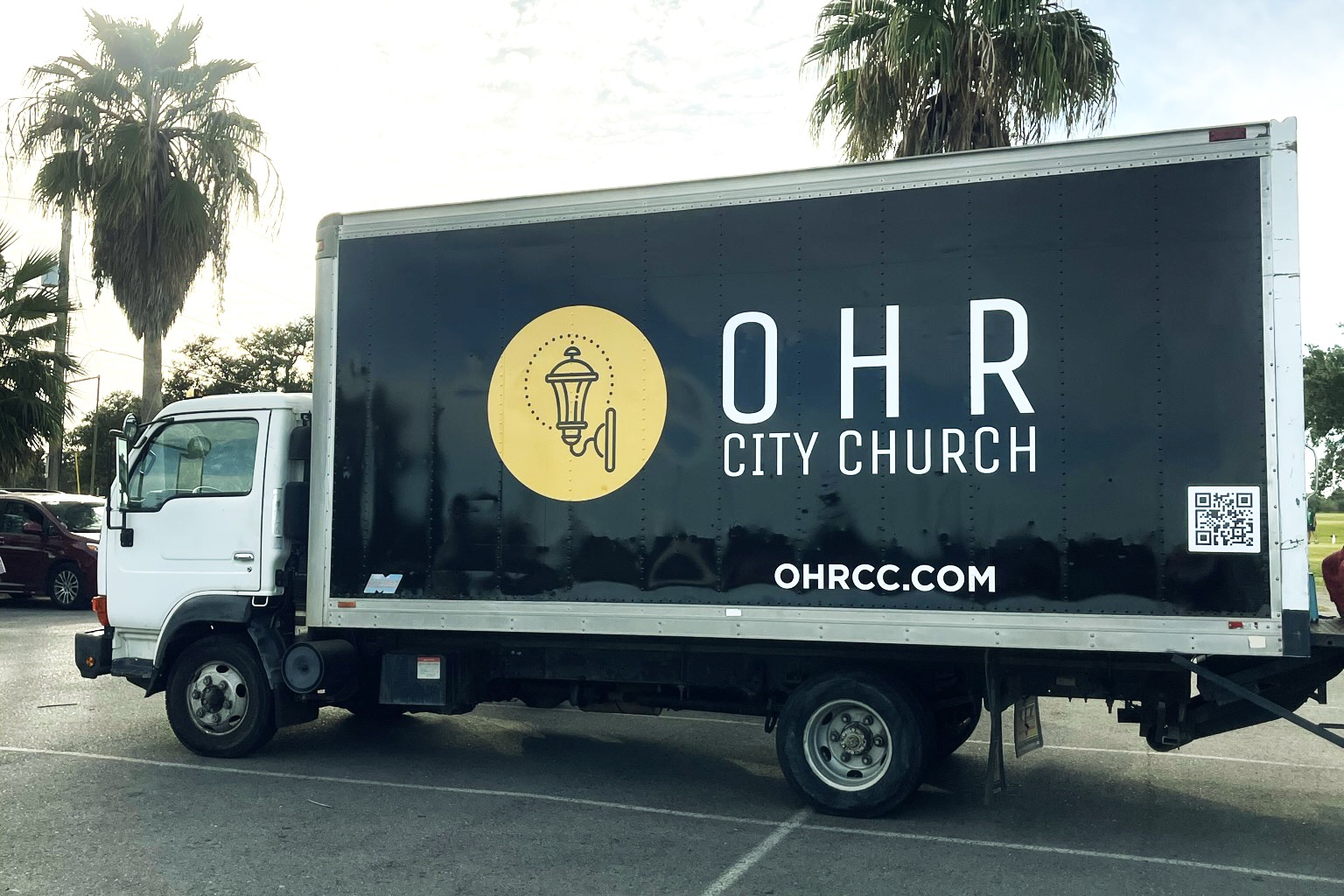
Church planting isn’t for the faint of heart. All church plants require faith, but it takes a special kind of crazy to “parachute plant,” where church planters “parachute” into a new place, starting from nothing with few resources or contacts. After seven years of pouring our hearts and souls into CityLife Church, a parachute church plant in Wilmington, North Carolina, my husband Mike and I were pretty certain God was calling us to do something different. We genuinely believed God was calling us into missions. In hindsight, I guess He was – just not in the way we pictured it.
This time, our “yes” led us into what was at that time the murder capital of America.
Neither one of us had a desire to plant another church, but the thought of doing something new was exciting to us. So, towards the end of our tenure at CityLife, we let the stirring of something new brew within us even though we had no idea what was coming.
During this season, a couple of things happened that God used to speak to our hearts. The Vanartsdalens, close friends of ours at CityLife, came to us with the news that they were moving to help plant another church within Open Bible (read more about their story HERE). As we celebrated what God was doing with our friends, it reignited a feeling within us that we had forgotten. (Never underestimate how your “yes” might affect someone else’s!) That feeling was the excitement and spiritual rush that comes with church planting. Neither Mike nor I expected to feel this again, and we were surprised to find the desire in our hearts to plant another church.
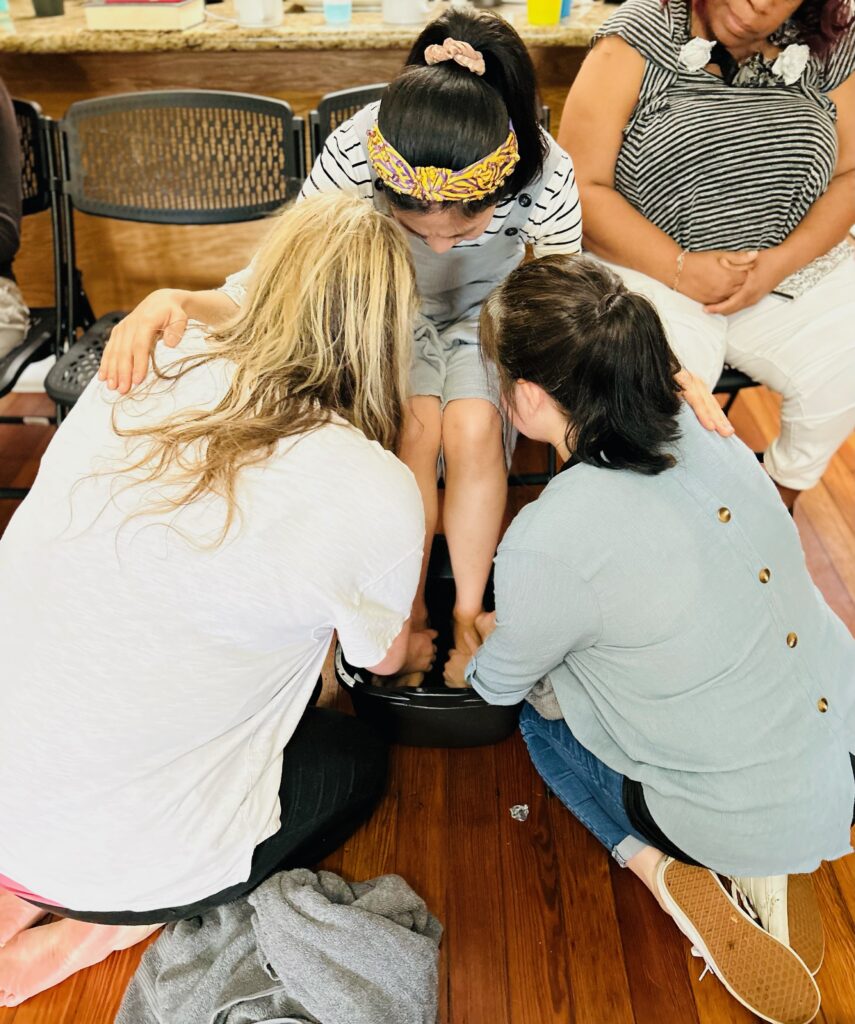
Everything changed after a conversation with our Open Bible Regional Director, Nathan Hagan. When we shared our initial desire with him, he began to brainstorm some different options for us to consider. One idea jumped out to both of us: “If you guys were interested in planting another church in the region, maybe it could be someplace like New Orleans.” Nathan mentioned other places, but the only one we remembered is the one that stuck to our hearts like glue. New Orleans: the word was spoken, and the Spirit responded!
Mike and I decided early on in our marriage that whatever God called us to do, we would say yes. This time, our “yes” led us into what was at that time the murder capital of America: New Orleans, Louisiana. It is extremely hard to uproot your family and your life and move hundreds of miles away to a place where there are no family, friends, or security. Despite these challenges, we sold many of our possessions, took what we could in a truck and trailer, and headed off into the unknown!
As soon as we put boots on the ground, we quickly realized that this city, this plant, and this call would be different from anything we had ever done. Almost immediately after moving, we were met with a triple homicide four houses down from ours, I was violently robbed at gunpoint, and our kids had a gun pulled on them while playing outside in our neighborhood. We faced circumstances that most people assumed we would run from, but when you know the Lord has called you to a land, you must trust that He will protect and prosper you in that land. Suffering is part of the calling; if we aren’t willing to suffer for the calling, we won’t partake of its full blessing. “But rejoice inasmuch as you participate in the sufferings of Christ, so that you may be overjoyed when his glory is revealed” (1 Peter 4:13).
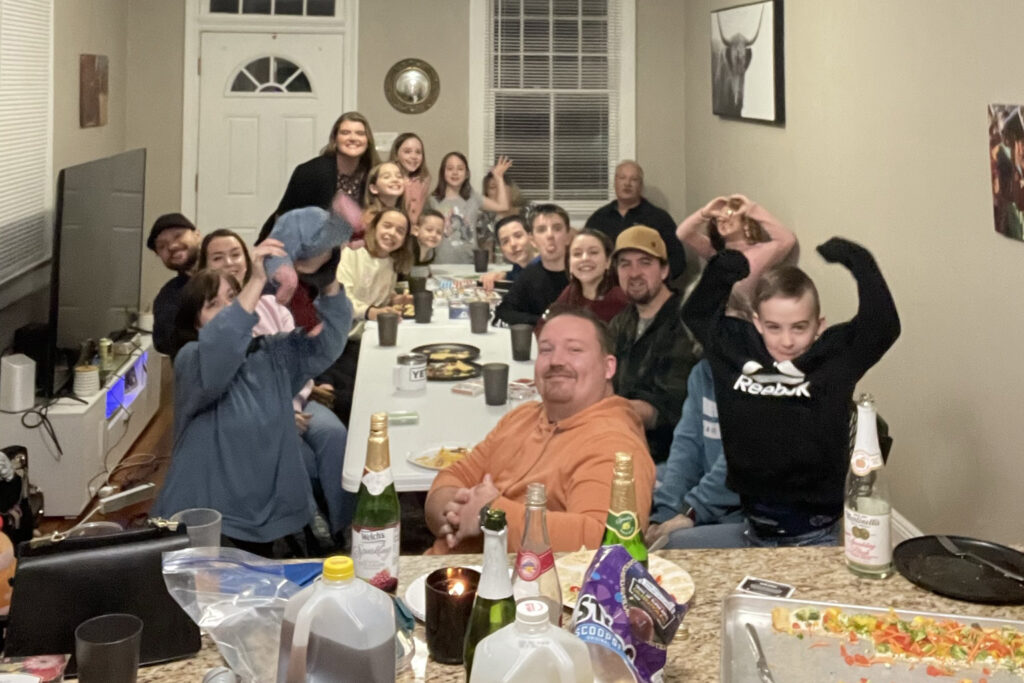
To rewind just a bit, when we knew for sure that we were moving, Mike sat our kids down and had them help compile a dream/prayer list of people we’d love to have on our team. Some on the list were Spirit-led, some were hopefuls, but all of them were people we thought might be crazy enough to consider moving with us!
Back before we’d moved to North Carolina for our first church plant, we had told our friends Greg and Tina that we felt they were supposed to come with us. I think Greg laughed at Mike when we first shared this, but they are now the pastors at CityLife! In similar fashion, we had another friend couple in Ohio that we video chatted with as we prepared to plant in New Orleans. We shared the news of where we were moving then asked them to pray about joining us. They agreed to pray, but I’m certain they thought we were crazy!
We faced circumstances that most people assumed we would run from, but when you know the Lord has called you to a land, you must trust that He will protect and prosper you in that land.
It’s amazing to see how God works in lives, stirring people’s hearts to be part of things that take an incredible amount of faith. Here we are two years later, and Pastor Eric and Lindsay Baker are in New Orleans with us putting their hands to the plow! They moved from a one-light farm town to one of the wildest cities in the world. They and their seven kids gave their “yes” to the Lord, leaving everything they had ever known. They have had their car stolen twice, and yet here they remain. In addition to the Bakers, God sent us another person from our dream list without us even having to ask; Mike’s mom, Lynne, joined the team and lives right next door to us now!
Fast forward to present day: we are so excited to see what God is doing at OHR City Church! “Ohr” is the Hebrew word for “light,” and it also means “to bring order amid chaos” (so fitting for this city!). Almost nothing has gone how we thought it would here, yet we believe everything is going exactly how God designed it.
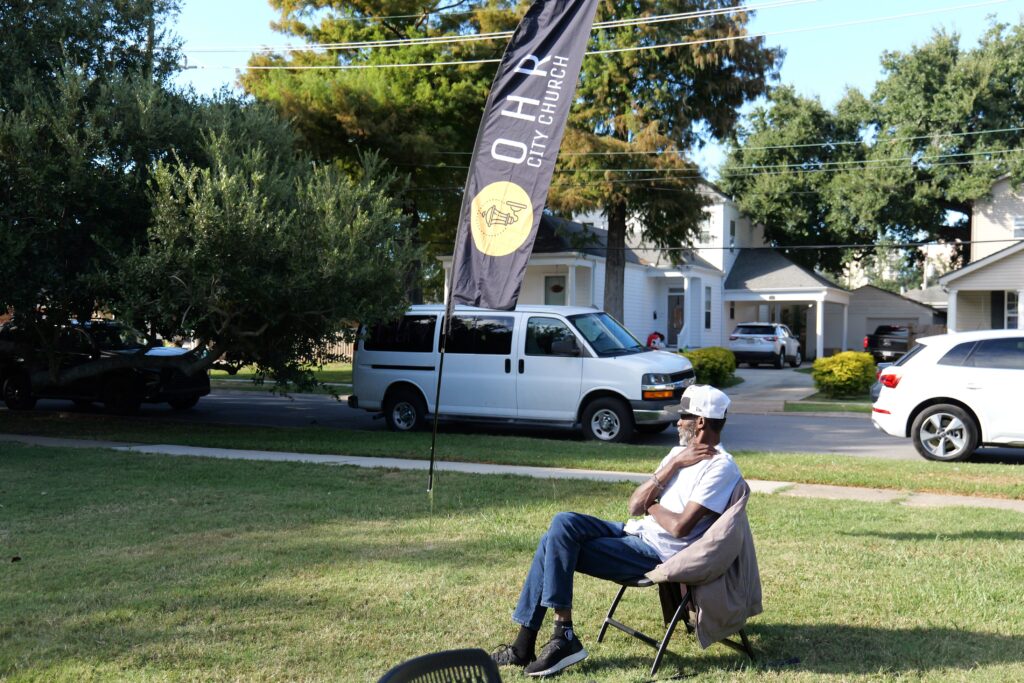
We are currently meeting every Sunday night in our house where we eat, worship, dream, pray, and study the word of God together. While the adults meet in our house, the kids go to Momma Lynne’s house next door! Our team is growing, and we are all becoming a family. None of us knows exactly where the Lord is taking us yet, but everyone is on board to find out!
If you feel God calling you to something, I encourage you to step out in faith and give God your “yes”!
*Want to read more from Mike and Cala Dickey? Read their related article: Five Ways to Support Church Planting
About the Author
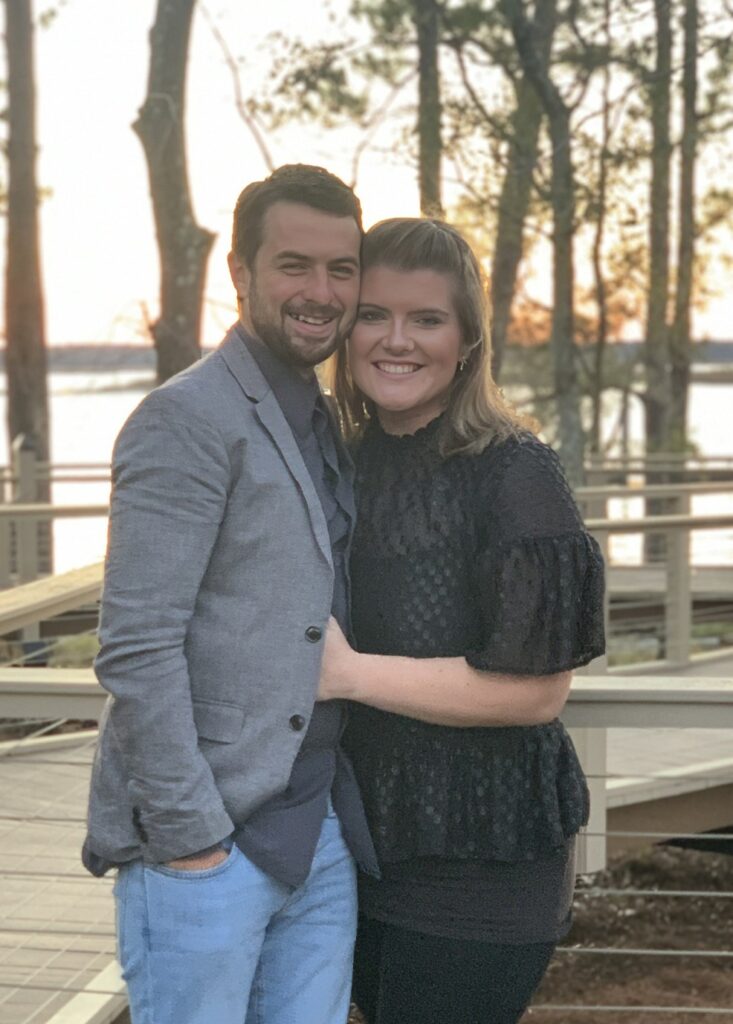
Cala Dickey
Mike and Cala Dickey are the lead pastors at the Southeast Region of Open Bible’s newest church plant, OHR City Church, in New Orleans, Louisiana. Before heading down to the bayou, Mike and Cala planted CityLife Church in Wilmington, North Carolina. They are passionate about pioneering and planting churches in areas that desperately need Jesus. The Dickey family is excited for what God is doing through OHR City Church in New Orleans! To learn more, visit Ohrcc.com.
Featured Articles
Un «Sí» costoso: Plantar una iglesia en la capital del asesinato en Estados Unidos
Published
2 months agoon
September 1, 2024By
Cala Dickey
La plantación de iglesias no es tarea fácil. Toda plantación de iglesias requiere fe, pero la «plantación en paracaídas», en la que los plantadores «saltan en paracaídas» a un lugar nuevo, partiendo de la nada y con pocos recursos o contactos, requiere un tipo especial de locura. Después de siete años de derramar nuestros corazones y almas en CityLife Church, una iglesia plantada en paracaídas en Wilmington, Carolina del Norte, mi esposo Mike y yo estábamos convencidos de que Dios nos estaba llamando a hacer algo diferente. Honestamente, creíamos que nos llamaba a las misiones. En retrospectiva, creo que lo estaba haciendo, sólo que no de la manera en que lo imaginábamos.
Esta vez, nuestro «sí» nos llevó a lo que en ese momento era la capital del asesinato de los Estados Unidos
Ninguno de los dos deseaba plantar otra iglesia, pero la idea de hacer algo nuevo nos entusiasmaba. Así que, casi al final de nuestro período en CityLife, dejamos que la emoción de algo nuevo se gestara dentro de nosotros, aunque no teníamos ni idea de lo que se avecinaba.
Durante ese tiempo, sucedieron un par de cosas que Dios usó para hablar a nuestros corazones. La familia Vanartsdalen, amigos cercanos de CityLife, nos comunicaron que se mudarían para ayudar a plantar otra iglesia con la Biblia Abierta (lea más sobre su historia aquí). Mientras celebrábamos lo que Dios estaba haciendo con nuestros amigos, se reavivó dentro de nosotros un sentimiento que habíamos olvidado. (¡Nunca subestimes cómo tu «sí» puede afectar al de otra persona!). Esa sensación era la emoción y la urgencia espiritual que viene con la plantación de iglesias. Ni Mike ni yo esperábamos volver a sentir esto, y nos sorprendió descubrir el deseo en nuestros corazones de plantar otra iglesia.

Después de una conversación con nuestro director regional de la Biblia Abierta, Nathan Hagan, todo cambió. Cuando le contamos nuestro deseo inicial, comenzó a pensar en algunas opciones diferentes para que las consideráramos. A ambos nos sorprendió esta idea: «Si ustedes estuvieran interesados en plantar otra iglesia en la región, tal vez podría ser en algún lugar como Nueva Orleans». Aunque Nathan mencionó otros lugares, el único que recordamos es el que se nos clavó enseguida en el corazón. Nueva Orleans: ¡se pronunció la palabra, y el Espíritu respondió!
Desde el comienzo de nuestro matrimonio, Mike y yo decidimos que diríamos «sí» a cualquier cosa que Dios nos llamara a hacer. Esta vez, nuestro «sí» nos llevó a lo que en ese momento era la capital del asesinato de los Estados Unidos: Nueva Orleans, Luisiana. Resulta sumamente difícil desarraigar a tu familia y tu vida, mudarte a cientos de kilómetros de distancia a un lugar donde no hay familia, amigos ni seguridad. A pesar de estos retos, decidimos vender muchas de nuestras pertenencias, cargamos lo que pudimos en un camión y un remolque, ¡y partimos hacia lo desconocido!
Tan pronto como comenzamos a trabajar, nos dimos cuenta de que esta ciudad, esta plantación y este llamado serían diferentes de todo lo que habíamos hecho hasta entonces. Casi inmediatamente después de mudarnos, nos enfrentamos con un triple homicidio a cuatro casas de la nuestra, me asaltaron violentamente a mano armada y apuntaron a nuestros hijos con un revólver mientras jugaban al aire libre en nuestro barrio. Tuvimos que hacer frente a circunstancias de las que la mayoría de la gente supondría que huiríamos, pero cuando sabes que el Señor te ha llamado a una tierra, tienes que confiar en que te protegerá y te hará prosperar en ella. El sufrimiento es parte del llamado; si no estamos dispuestos a sufrir por el llamado, no participaremos de toda su bendición. «En cambio, alégrense mucho, porque estas pruebas los hacen ser partícipes con Cristo de su sufrimiento, para que tengan la inmensa alegría de ver su gloria cuando sea revelada a todo el mundo.» (1 Pedro 4:13, NTV).

Volvamos atrás, cuando supimos definitivamente que nos íbamos a mudar, Mike se sentó con nuestros hijos y les pidió que le ayudaran a elaborar una lista de oración de las personas que «soñábamos» que formaran parte de nuestro equipo. Algunos de los nombres en la lista fueron guiados por el Espíritu, otros eran candidatos, pero todos eran personas que pensamos que podrían estar lo suficientemente locas como para considerar mudarse con nosotros.
Antes de mudarnos a Carolina del Norte para plantar nuestra primera iglesia, les habíamos dicho a nuestros amigos Greg y Tina que sentíamos que ellos debían ir con nosotros. Creo que Greg se rio de Mike cuando compartimos esto por primera vez, ¡pero ahora son los pastores de CityLife! De forma similar, teníamos otra pareja amiga en Ohio con la que nos comunicábamos por videochat mientras nos preparábamos para plantar la iglesia en Nueva Orleans. Les contamos que nos íbamos a mudar y les pedimos que consideraran orar para unirse a nosotros. Estuvieron de acuerdo en orar, ¡pero estoy seguro de que pensaron que estábamos locos!
Tuvimos que hacer frente a circunstancias de las que la mayoría de la gente supondría que huiríamos, pero cuando sabes que el Señor te ha llamado a una tierra, tienes que confiar en que te protegerá y te hará prosperar en ella.
Es asombroso ver cómo Dios trabaja en las vidas de las personas, moviendo sus corazones para ser parte de algo que requiere una cantidad increíble de fe. Ya han pasado dos años, y el pastor Eric y Lindsay Baker están en Nueva Orleans con nosotros poniendo sus manos en el arado. Se mudaron de un pueblo pequeño a una de las ciudades más desenfrenadas del mundo. Ellos y sus siete hijos dieron su «sí» al Señor, dejando todo lo que habían conocido. En dos ocasiones les han robado el vehículo y, sin embargo, aquí siguen. Además de los Baker, Dios nos envió a otra persona que estaba en nuestra lista de sueños/oración sin que ni siquiera tuviéramos que pedírselo; la madre de Mike, Lynne, se unió al equipo y ¡ahora vive justo al lado de nosotros!
Ahora, estamos muy emocionados de ver lo que Dios está haciendo en OHR City Church. «Ohr» es la palabra hebrea para «luz», y también significa «poner orden en medio del caos» (¡tan apropiado para esta ciudad!). Aunque casi nada ha salido como pensábamos, creemos que todo está saliendo exactamente como Dios lo diseñó.

En la actualidad nos reunimos todos los domingos por la noche en nuestra casa donde comemos, adoramos, soñamos, oramos y estudiamos juntos la Palabra de Dios. ¡Mientras que los adultos se reúnen en nuestra casa, los niños van a la casa de Mamá Lynne al lado! Nuestro equipo está creciendo, y todos nos estamos convirtiendo en una familia. Ninguno de nosotros sabe exactamente a dónde nos ha de llevar el Señor, ¡pero todos estamos dispuestos a descubrirlo!
¡Si sientes que Dios te está llamando a emprender algo, te animo a que des un paso de fe y le des tu «sí» a Dios!
Sobre la Autora

Cala Dickey
Mike y Cala Dickey son los pastores principales de la más reciente iglesia plantada por la Región Sureste de la Biblia Abierta, OHR City Church, en Nueva Orleans, Luisiana. Antes de ir al bayou, Mike y Cala plantaron CityLife Church en Wilmington, Carolina del Norte. Les apasiona ser pioneros y plantar iglesias en áreas que necesitan desesperadamente a Jesús. ¡La familia Dickey está emocionada por lo que Dios está haciendo a través de OHR City Church en Nueva Orleans! Para más información, visite Ohrcc.com.

In 2017, my husband Dyecol and I were asked to be the interim pastors of Word of Life Open Bible Church in Lehigh Acres, Florida. Little did we know that our two weeks as interim pastors would turn into seven years and counting. After accepting the call to be the permanent pastors, we moved to Lehigh in September, right after Hurricane Ivan had hit. There was no electricity in the city, and it felt like we were moving into darkness and chaos. I didn’t realize we were also moving into the rest of our lives.
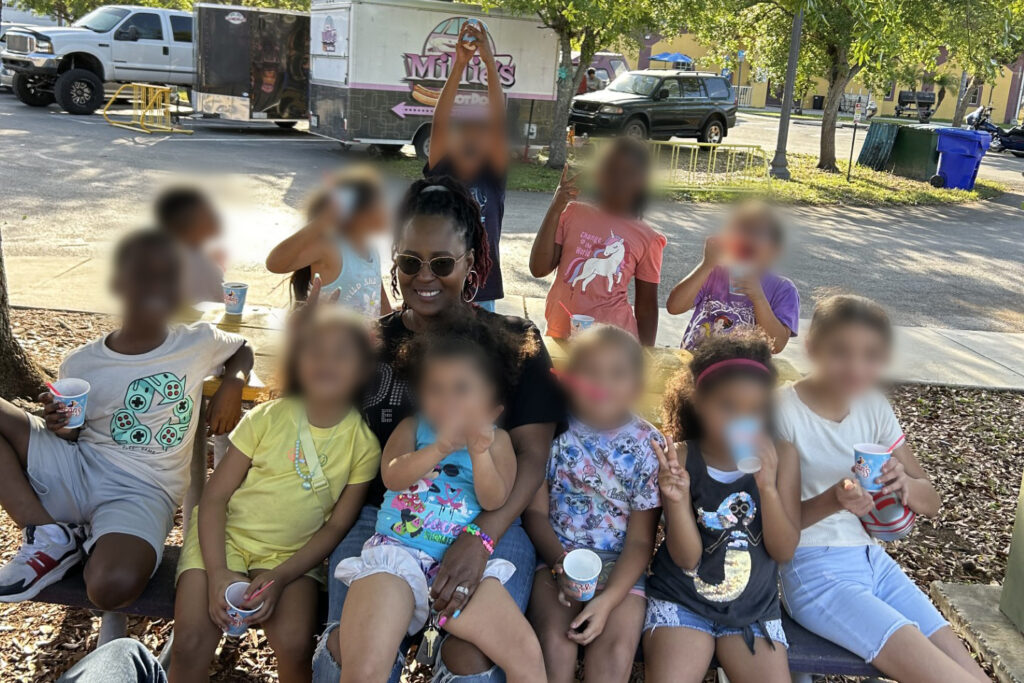
Dyecol and I had never had children together. Shortly after our move to Lehigh, we saw a billboard for an adoption agency. Dyecol went to the agency’s office for more information, and it wasn’t long before we were taking a class on adoption. The instructor of the class emphasized how much greater our chances would be to adopt through fostering, and pretty soon we got our first call to foster a three-year-old girl named Isabella. I will never forget seeing that scared little girl walk through our doorway. I scooped her up in my arms, she laid her head on my shoulder, and my future was sealed.
We’d had Isabella for only a month when we got a call for a second little girl, Maria. Maria’s sister Ruby would join her a few months later, and not long after Ruby, we got a call for a fourth child, our first newborn. This baby was only six days old and had been born addicted to drugs. We were told her parents didn’t want her, and we became excited that this baby might become ours. We attached, weaned her off drugs, and she began to thrive. It was then that her biological father decided that he wanted her. As difficult as this was, it was further complicated by the fact that our hopes of adopting the other girls fell through around the same time. We were shattered. This taste of parenthood had convinced me that I wanted to be a mom again, but fostering was too difficult. I told myself, “Never ever again!” Until I got the next call.
Sometimes God walks you through a process of loss and then He dumps blessing on you when you least expect it.
“Ms. Walker, I have a little girl for you….”
“I don’t know, we’re taking a break.”
“Ms. Walker, I’m telling you, you’re going to want this little girl.”
(Deep Breath.) “Okay.”
Our case worker brought over this ten-year-old little girl with big old grandma glasses, fuzzy hair, and the cutest smile. That little girl walked into our lives, and she has changed us forever. Her name is Anna-Tae Walker, and she became our first adopted daughter. Two months later, we were introduced to our daughter Heavenly. We loved her from the moment we saw her. Sometimes you just know. I said to my husband, “She’s not leaving.” True to my word, Heavenly AND her brother Joshua became ours through adoption.

Sometimes God walks you through a process of loss and then He dumps blessing on you when you least expect it. I didn’t understand why we couldn’t have the first little girls we tried to adopt, but God said no. He knew who our kids were.
Despite my having three adopted children, I continued to take new placements. My first experiences fostering almost broke me, but as I continued to say “yes” to each new child, God reinforced my heart with His strength. Instead of shrinking with each loss, my heart grows bigger as I watch family reunifications. God has gifted me with the capacity to love and to lose.
One night as I was lying on my bed, the Lord gave me a word: “Walker’s House of Hope.” I told my husband, “This is what we’re going to name the house where we raise the children God brings to us.” We started praying, “Lord, if you give us a bigger house we will take more children.” At that time, we had seven children in a three-bedroom house. It wasn’t long before the Lord provided us with a four-bedroom house.
God has gifted me with the capacity to love and to lose.
I got the call almost immediately: “Ms. Walker, we have a sibling group of three.”
“You know I have seven children, right?”
“Yes, Ms. Walker, but you were born for this.”
Immediately the voice of the Lord came to me, reminding me of my prayer. He had given me a bigger house; I was obligated to fulfill my promise. So, we ran out and bought another bunk bed.
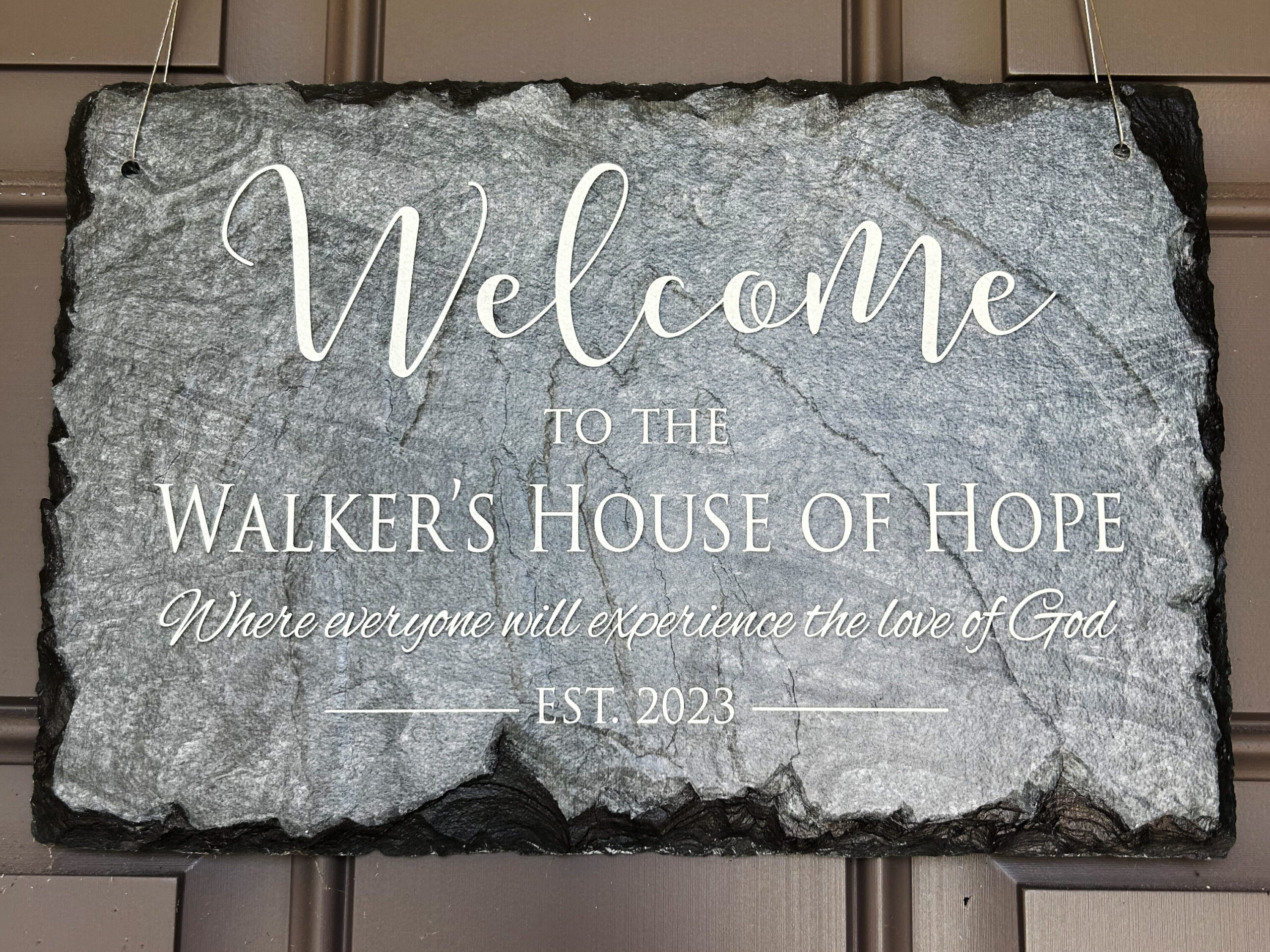
Today, we have ten children: three adopted and seven fostered. Every day after school, I hear ten voices at once, beautiful chaos. Each time I say aloud, “I have ten children,” I can’t believe it – not because it’s too much, but because it feels comfortable. When I dream about the future, I see myself with even more children, running around a big property and coming in to eat dinner around our huge kitchen table. I have found my calling, and I am believing for God to gift us with the house that’s as big as my heart.
I had a sign made that hangs in our current home: “Walker’s House of Hope.” When I look at it, I say to God, “This is not it. But this is it for now.”
Seven years ago, we moved to a city that was in chaos and darkness. Today, we live in a home of chaos and light. And as I look around my busy kitchen table, I have never been more excited about the rest of my life.
About the Author
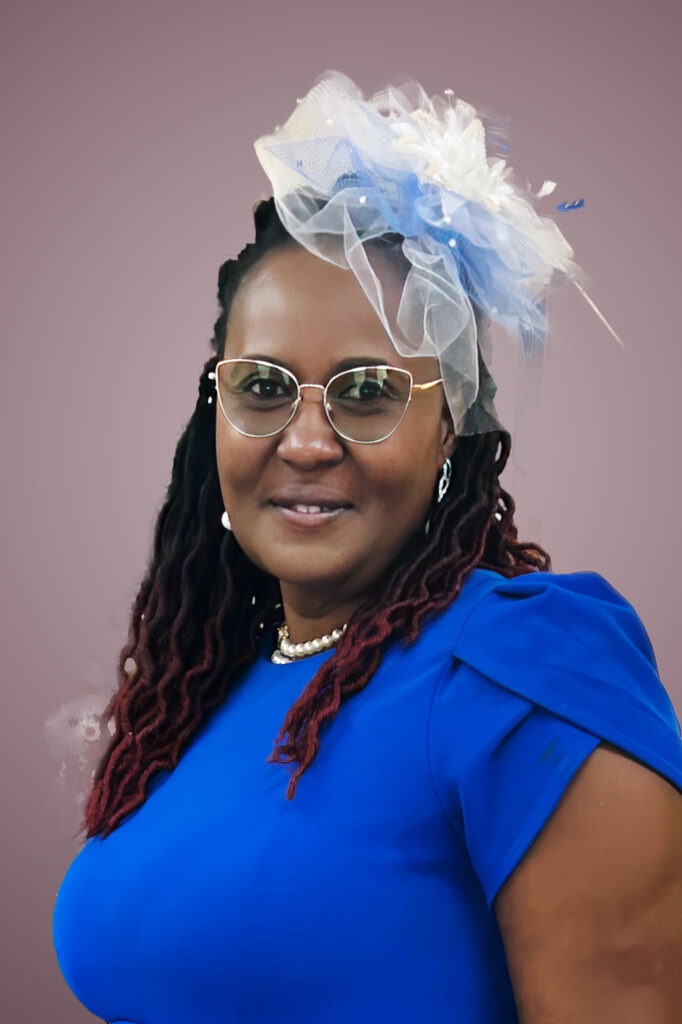
Taneasha Walker
Taneasha Walker is currently co-pastoring Word of Life Open Bible Church in Lehigh Acres, Florida, with her husband Dyecol. She serves on the Southeast Regional Board as an At- Large member. Taneasha has gained experience in every area of ministry, using this knowledge to effectively care for the local church body as well as the children that have been entrusted to her. She is passionate about prayer, utilizing it in every endeavor. In her free time, Taneasha’s hobbies include reading, singing, and traveling.







